Hook Norton, Oxfordshire (†Oxford) C.15
Saints Peter and Paul
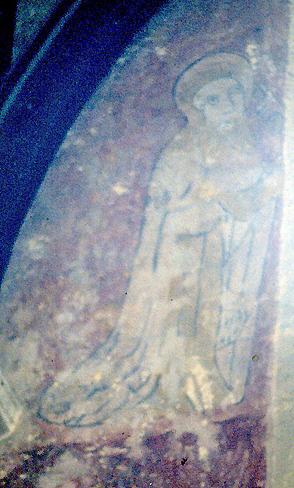
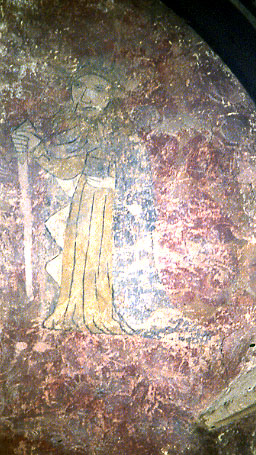
These photographs from Hook Norton, digitised from some rather elderly slides, leave something to be desired, but they will have to suffice until I can get back to the church. St Peter is at the left, holding his key (only faintly visible now against the rapidly deteriorating reddish background) At the right and shown in the photograph at the right here is St Paul, holding the down-turned sword of his martyrdom.
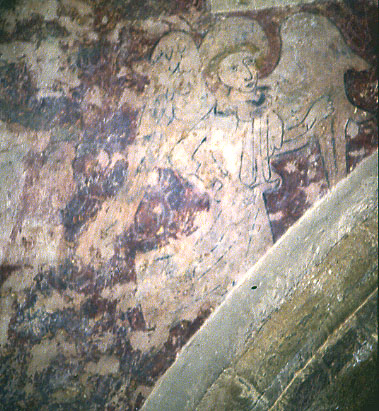
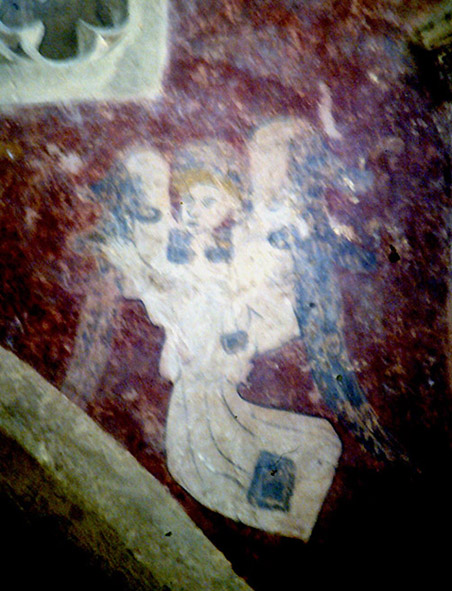
No one would claim that the Hook Norton paintings are great art, but, like many another medieval wall painting in rural England, they have an undeniable rustic charm. The two saints (often found together – there are several examples among the paintings on this site) flank the chancel arch and each is accompanied by an angel.The angels are rather impressive with their carefully painted extended wings which I think once had had the ‘peacock’ patterning found elsewhere, including in élite art. The angel below Peter is shown kneeling below his figure here and that below St Paul in a corresponding position below Paul on the right. The ‘peacock's eye’ wing pattern is detectable here as well.
One odd feature is the book shown on the lower part of this angel's robe. Perhaps it is intended for Paul’s Epistles, signalling his specific mission to the Gentiles and his consequent slightly anomalous position in relation to the original group of twelve followers of Christ Given the feverish state of 15th century theology in England there is really no telling.
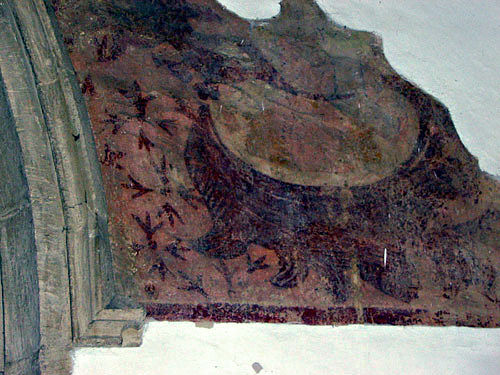
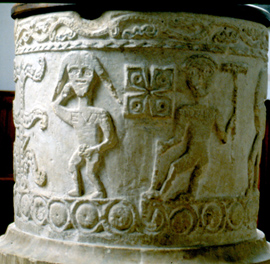
But ultimately the great glory of Hook Norton church is the very remarkable Anglo-Saxon font pictured at the left. It is sometimes described as having ‘pagan’ Signs of the Zodiac, but this can be misleading. Sagittarius, clearly labelled as such, is indeed there (on the opposite side and thus not visible here), but so are Adam and Eve, with the Tree of Life, and this photograph shows them in their postlapsarian state – Eve trying to cover her pudenda at the left, and Adam, now under the Curse of Labour, with a spade, and a rake held over his shoulder. The identifying inscriptions are fading fast, but a drawing produced by an expert in Anglo-Saxon sculpture confirms the identity of the figures.
Find it by following this link to a lecture on The Medieval Bestiaries (PDF) and searching for Hook Norton. Trying to separate pagan and Christian imagery in eleventh-century England can be very problematic indeed.